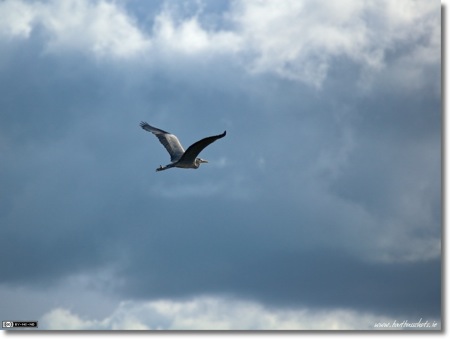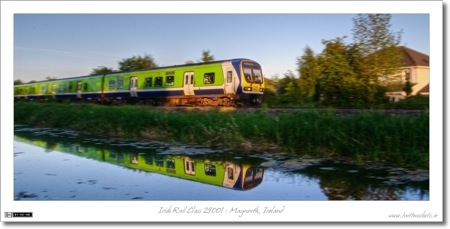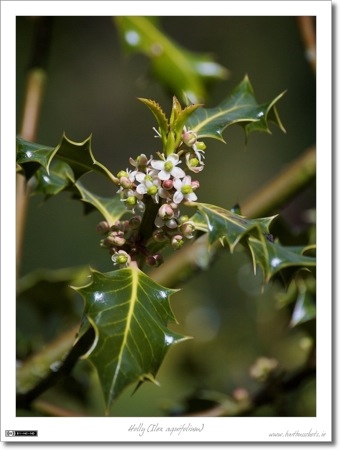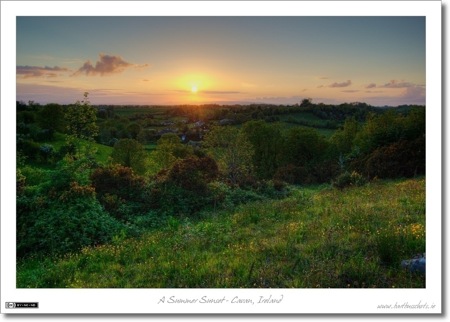Jul
28
Photo of the Week 75 – Into an Uncertain Sky
Filed Under Photography on July 28, 2009 | 2 Comments
I have a theory that there are two very different ways to come home with a great photo, meticulous preparation, and the ability to capitalise on serendipity. Meticulous preparation speaks for itself, you plan what it is you are going to shoot, how you are going to shoot it, and you do as much research as possible up-front so you know where to be when and with what gear. The second type of great shot comes from a completely different skill, awareness. I seldom go out with my camera without a plan, and I usually come home with the shots I’d planned, but, I don’t limit myself to the plan, I’m constantly on the lookout for unexpected shots. Serendipity can provide for some superb shots, if you just remember to stay alert for the call of opportunity.
In many way’s I’m proud of the fact that most of the shots that make it to this series were in some way planned. But, that doesn’t stop me loving it when I get a totally expected shot because I happened to be in the right place at the right time with the right gear, and aware enough of my surroundings to realise that fact. That’s exactly what happened when I shot this week’s instalment.
- Camera: Nikon D40
- Lens: Nikon DX AFS 55-200mm
- Exposure: 1/200 sec
- Focal Length: 200mm
- Focal Ratio: f/5.6
- ISO: 200
- Camera Mode: Aperture Priority
- Exposure Bias: -0.7EV
- Processing: Used the Dodge & Burn plugin in Aperture to lighten the bird a little to help it stand out from the background.
Jul
25
What’s the Story with Tonemapping?
Filed Under Photography on July 25, 2009 | Leave a Comment
I’ve become very fond of tonemapping as a photographic technique, and have mentioned it quite a few times in the descriptions of the photos I pick for my Photo of the Week blog posts. The more people see my tonemapped photos, and the more I mention tonemapping on Flickr, the more questions I get about it, so, instead of repeating myself over and over again, I figured I may was well just write an article about it that I can then link people to.
Lets start with some background, particularly with the concept of the dynamic range of a scene. You hear the term a lot, but I get a feeling a lot of people are not sure what it means. The simplest way I can describe it is as the difference between the brightest objects in the scene, and the darkest objects in the scene. Our eyes have quite a large dynamic range, at mid-day on a sunny day we can see both the things illuminated by the sun, and the things in shadow at the same time. Try that with a camera, and you’ll soon find that cameras have a much smaller dynamic range than our eyes. You’ll either end up with no detail in the shaded bits, or no detail in the bright bits, but try as you might, you won’t capture both! This is not a new problem, although it has gotten worse. Film has a bigger dynamic range than the JPEG images that come out of our digital cameras, but even film has a signifficatly smaller dynamic range than our eyes.
Jul
19
Photo of the Week 74 – Commuter Reflections
Filed Under Photography on July 19, 2009 | Leave a Comment
This week’s photo of the week came close to being binned. It really didn’t look like much before tonemapping, and even then, it’s technically imperfect. ‘Pixel Peepers’ would be horrified by the noise down in the bowls of this image, they’d also notice that the focus on the nose of the train is a little soft. Also, anyone can see that the motion blur is not as strong as it could be, and indeed, probably should be. Even after tonemapping, cropping, and quite a few tweaks in Aperture, I initially gave this image a low rating, three out of five to be precise. But, each time I scanned back through the project, the image kept jumping out at me. It kept grabbing my eye. First I increased it to 4 stars. Then, recently, 5 – my threshold for consideration for Photo of the Week.
I’ve spent a lot of time looking at the image to figure out why it kept catching my eye. I’ve figured out at least some of the things I like about it. The most obvious one being, it has a train in it! I also love reflections, so that’s a definite second reason. I also love the soft evening light, it really makes for great photos, but in this case it took tonemapping to bring out that wonderful light. Finally, I’ve always had a thing for panoramic crops.
- Camera: Nikon D40
- Lens: Nikon DX AFS 18-55mm (D40 kit lens)
- Exposure: 1/50 sec
- Focal Length: 18mm
- Focal Ratio: f/18
- ISO: 400
- Camera Mode: Shutter Priority
- Processing: Generated by tonemapping a single RAW file in Photomatix Pro.
Jul
12
Photo of the Week 73 – Holly in Bloom
Filed Under Photography on July 12, 2009 | 1 Comment
It’s been a long time since I’ve posted one of my flower shots, so this week I’m sharing my favourite flower pick of the year so far. We all know how lovely red Holly berries (Ilex aquifolium) are around Christmas time, but very few people ever notice the delicate white flowers from which those berries come. This shot shows a closeup look at a Holly branch in bloom. This tree is growing in the Junior Gardens on the St. Patrick’s College campus (AKA NUI Maynooth South Campus) in Maynooth, Ireland.
- Camera: Nikon D40
- Lens: Nikon DX AFS 55-200mm
- Exposure: 1/1600 sec
- Focal Length: 130mm
- Focal Ratio: f/8
- ISO: 400
- Camera Mode: Aperture Priority
- Exposure Bias: -0.7EV
Jul
4
Photo of the Week 71 & 72 – A Cavan Sunset
Filed Under Photography on July 4, 2009 | 4 Comments
I’ve found myself one week behind yet again, so, for what seems like the millionth time, I’m doing a double-post this weekend. As always with these multiple posts, I’m choosing two related photos, in this case, VERY related photos, they were both taken within a few minutes of each other of the very same subject! The reason I’ve chosen to do these together is because they show two approaches to the same situation.
When you shoot a sunset the dynamic range is exceptionally high. You are shooting into the sun, and at the same time, the ground is getting dark, so, you have a very bright subject, with very dark surroundings. The range between the brightest and darkest range of the scene is just too big for a camera to take in. This leaves you with a choice between two approaches, both of which can make for fantastic photos.
As a complete geek, my first reaction is to throw technology at the problem. Although the technology I threw at the problem is quite modern (HDR photography), the idea is not new. In the past people would use graduated filters to solve the same problem. With a graduated filter the top of the filter blocks quite a lot of light, the bottom, none. You can get filters that have very abrupt graduations where half the filter is dark, the other half completely transparent with a very short transition between the two regions, or you can have filters that go smoothly from dark to light over the entire length of the filter. Different situations will call for different filters, but the aim is the same, get both the bright bits and the dark bits properly exposed despite the large difference in brightness between them (i.e. the large dynamic range). I don’t own any filters, so that’s not what I did. Instead, I used a technique called Tonemapping on a RAW file. The result is that you can see detail in both the bright sky and the dark landscape in this shot, which is the first of my two photos for this week:
- Camera: Nikon D40
- Lens: Nikon DX AFS 18-55mm (D40 kit lens)
- Exposure: 1/320 sec
- Focal Length: 18mm
- Focal Ratio: f/8
- ISO: 200
- Camera Mode: Aperture Priority
- Exposure Bias: -1.0EV
- Processing: Generated by tonemapping a single RAW file in Photomatix Pro.
So that’s an example of taking the first option for dealing with a high dynamic range, use technology to get around it. So what’s the second option? Don’t fight it, accept it, and use it! If you can’t get everything exposed properly, don’t even try, instead, intentionally only expose for one element. With a sunset that one element is the sky, and then you intentionally throw the rest into silhouette. You intentionally take away all exposure in your foreground! This can result in a lot of black space in your image, so you often have to crop pretty hard to make this work well. An example of this is the second image I’ve chosen for this week:
- Camera: Nikon D40
- Lens: Nikon DX AFS 18-55mm (D40 kit lens)
- Exposure: 1/640 sec
- Focal Length: 55mm
- Focal Ratio: f/8
- ISO: 200
- Camera Mode: Aperture Priority
- Exposure Bias: -2.0EV
Jul
4
A Quick Review of Syrinx – A Native OS X Twitter Client
Filed Under Computers & Tech on | Leave a Comment
I recently moved to a new machine (a hand-me-down G5 20″ iMac), and when it came to installing my new apps I decided I’d had enough of Adobe AIR and the whole idea of web apps pretending (poorly) to be native apps. I like OS X, and I want the full power of OS X in my apps. I also like how OS X apps all look and work similarly to each other. You just don’t get that with AIR apps like Twhirl (which had been my Twitter client up to that point). Not long before I got my new Mac listener Scott had contributed a short review of Syrinx to the NosillaCast, so I decided to give it a go.
I took and instant liking to the app because it’s a proper OS X app, because it uses the OS X keychain to securely save my password, and because it has Growl support. The fact that it’s free also helps of course! I’ve been using it for a month or so at this stage, and I’m still happy enough with it to keep it as my current client on all three of my Macs. It’s also under very active development at the moment with updates coming out regularly, so I have high hopes for this app’s future.











